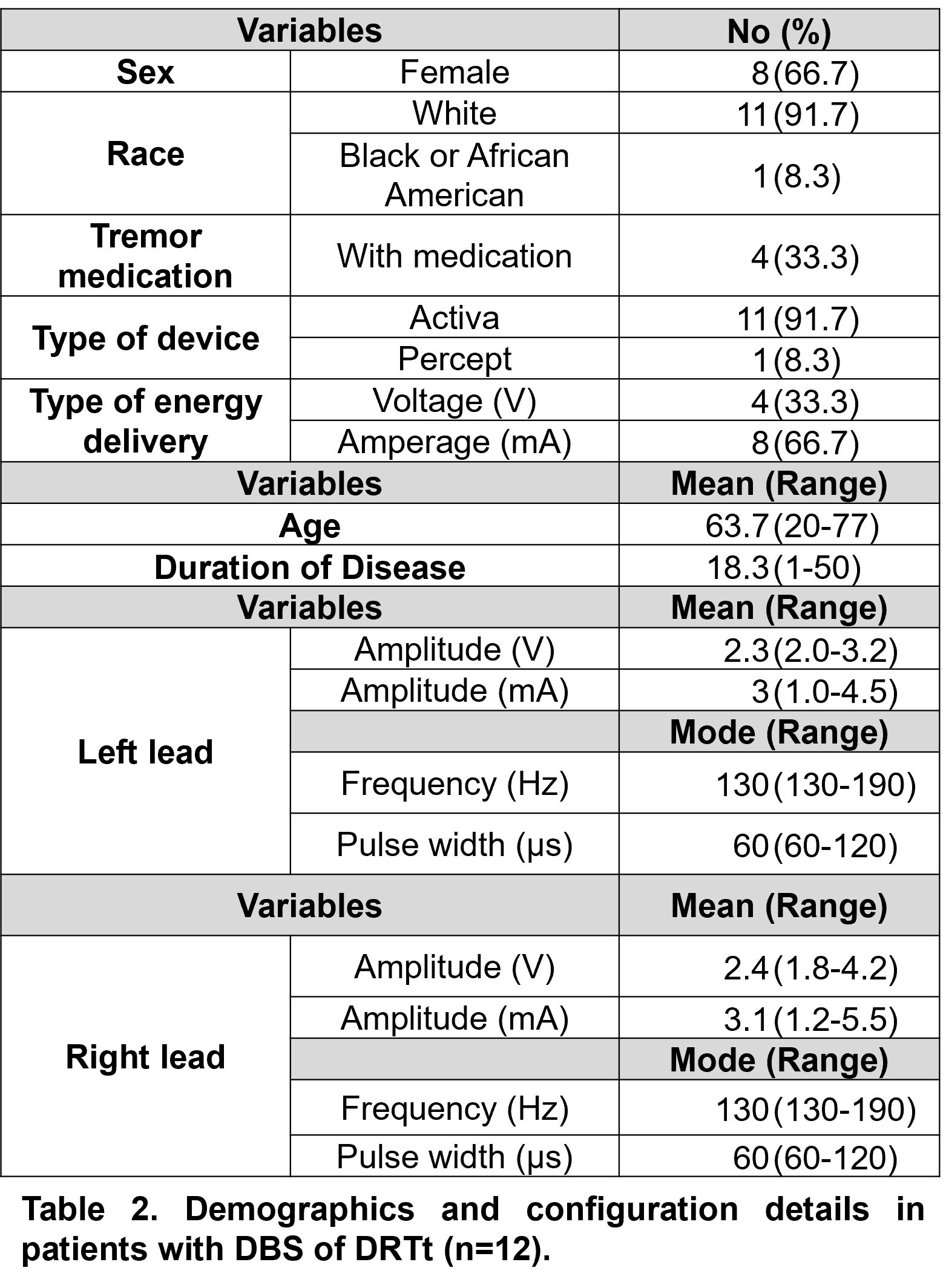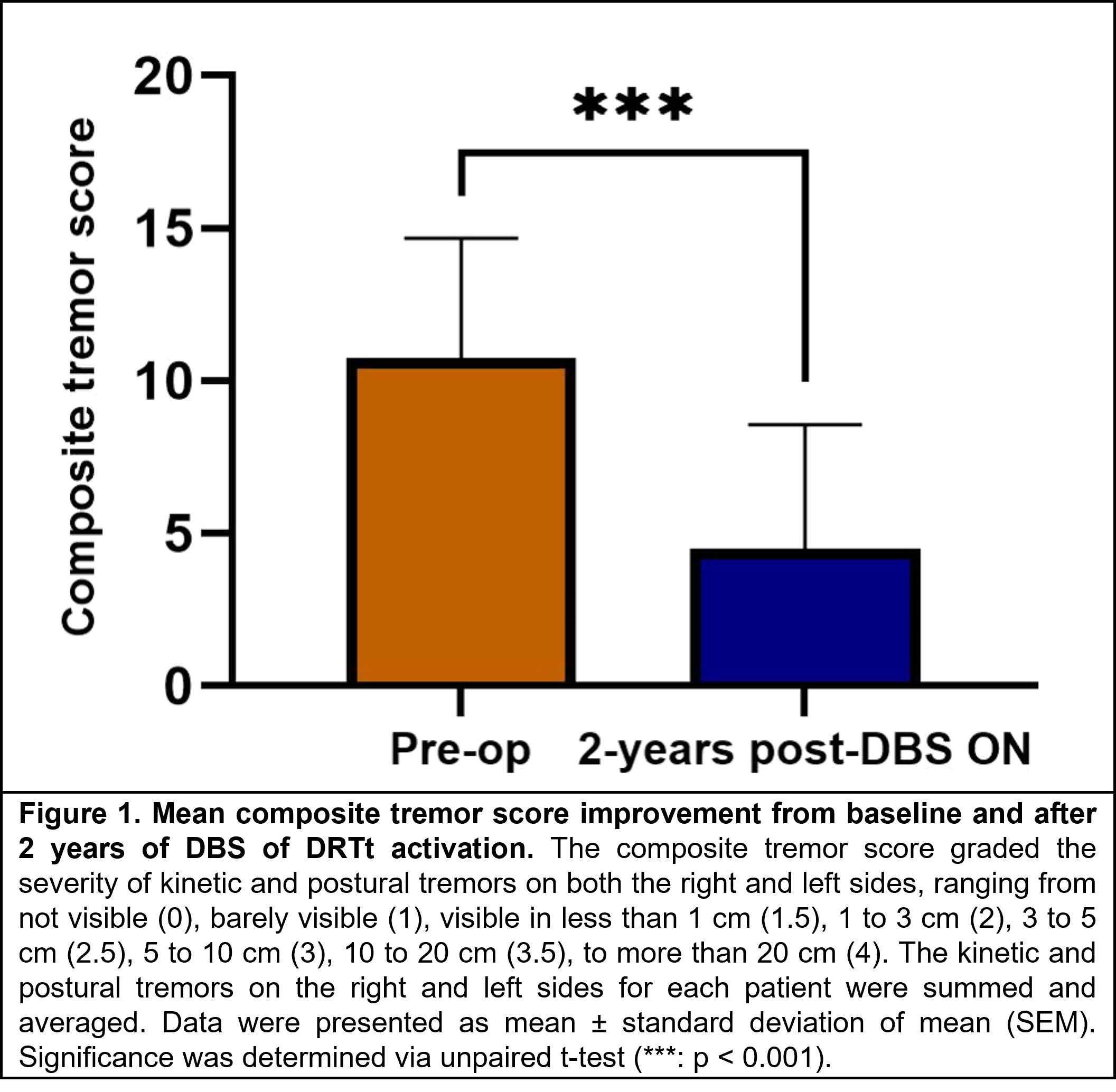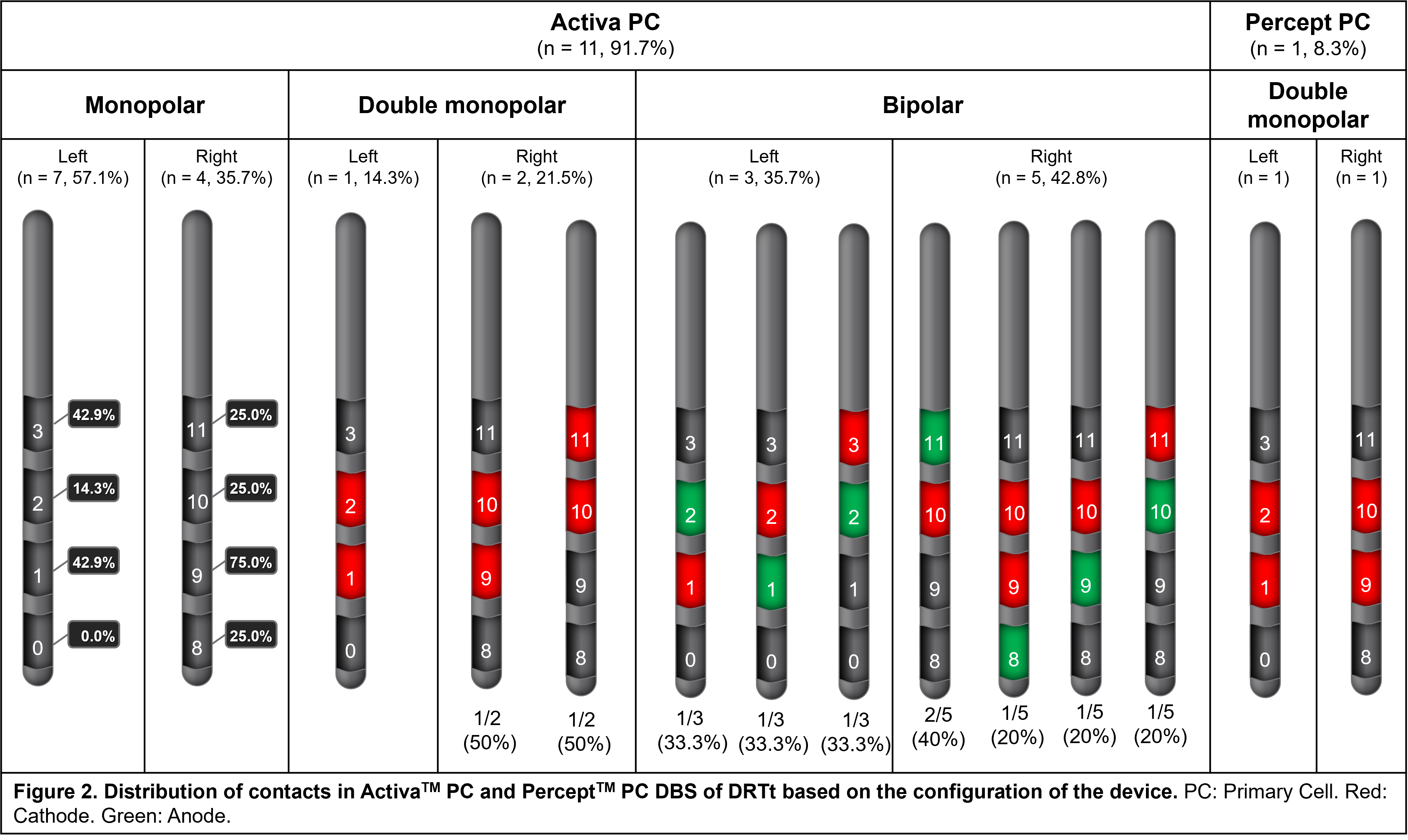Category: Tremor
Objective: To assess the stimulation parameters and 2-year clinical outcomes of deep brain stimulation (DBS) of the dentato-rubro-thalamic tract (DRTt) for the treatment of essential tremor (ET).
Background: Essential tremor is one of the most common neurologic disorders in adults [1]. Medication refractory cases have been treated with deep brain stimulation, typically targeting the ventral intermediate nucleus of the thalamus [2], and theoretically engaging important neural networks, like the DRTt [3]. Diffusion tensor imaging (dTi) produced tractography allows our group to illustrate and prospectively target the DRTt in DBS for ET [4].
Method: We analyzed data from 12 patients with ET who underwent DRTt DBS implantation with Activa Primary Cell (PC) or Percept PC impulse generator. The DRTt was targeted pre-operatively using a 3-Tesla MR imaging system and fiber tracking using StealthViz dTi software application. DRTt was defined by fibers originating from the dentate nuclei that follow the superior cerebellar peduncle, decussate at the contralateral red nucleus, and course to the thalamus and precentral gyrus. The dTi-defined DRTt elucidated appropriate X and Y coordinates using a Z depth of 0 or -1 mm from the mid-commissural plane [4].
To assess distal hand tremor, we compared baseline composite scores of bilateral postural and kinetic tremors by scale set in The Essential Tremor Rating Assessment Scale [table1] prior to DBS implantation to total scores at 2-years post-DBS ON and confirmed stimulation parameters at that time.
Results: 12 patients underwent a 2-year follow-up; mean age was 63.7 years, and mean duration of ET at baseline was 18.3 years [table2]. Baseline composite tremor score [table1] was 10.8 (SD±3.9) points. There was a statistically significant reduction to 4.5 (SD±4.1) points in the 2-year follow-up post-DBS ON, p<0.001 [figure1]. The most commonly employed parameters included pulse width of 60us, frequency of 130 Hz, and low energy voltage or current with cathode activation on contact 1 or 2/left lead and contact 9 or10/right lead in a monopolar, double monopolar, or bipolar configuration [figure2].
Conclusion: DRTt DBS is effective for long-term control of refractory ET. Relatively low to moderate energy stimulation parameters with middle contacts cathode stimulation were used to improve distal hand tremor.
Table 1
Table 2
Figure 1
Figure 2
References: 1. Louis ED. Essential tremor. Lancet Neurol. 2005;4(2):100-10. doi: 10.1016/S1474-4422(05)00991-9. PubMed PMID: 15664542.
2. Prakash P, Deuschl G, Ozinga S, Mitchell KT, Cheeran B, Larson PS, Merola A, Groppa S, Tomlinson T, Ostrem JL. Benefits and Risks of a Staged-Bilateral VIM Versus Unilateral VIM DBS for Essential Tremor. Mov Disord Clin Pract. 2022;9(6):775-84. Epub 20220614. doi: 10.1002/mdc3.13490. PubMed PMID: 35937489; PMCID: PMC9346253.
3. Coenen VA, Allert N, Paus S, Kronenburger M, Urbach H, Madler B. Modulation of the cerebello-thalamo-cortical network in thalamic deep brain stimulation for tremor: a diffusion tensor imaging study. Neurosurgery. 2014;75(6):657-69; discussion 69-70. doi: 10.1227/NEU.0000000000000540. PubMed PMID: 25161000.
4. Fenoy AJ, Schiess MC. Deep Brain Stimulation of the Dentato-Rubro-Thalamic Tract: Outcomes of Direct Targeting for Tremor. Neuromodulation. 2017;20(5):429-36. Epub 20170303. doi: 10.1111/ner.12585. PubMed PMID: 28256785.
To cite this abstract in AMA style:
M. Schiess, E. Tharp, J. Martinez-Lemus, R. Ritter Iii, R. Abuamouneh, E. Rodarte, A. Fenoy. Dentato-Rubro-Thalamic Tract Deep Brain Stimualtion for Essential Tremor: Stimulation Parameters and Clinical Outcomes [abstract]. Mov Disord. 2024; 39 (suppl 1). https://www.mdsabstracts.org/abstract/dentato-rubro-thalamic-tract-deep-brain-stimualtion-for-essential-tremor-stimulation-parameters-and-clinical-outcomes/. Accessed December 19, 2025.« Back to 2024 International Congress
MDS Abstracts - https://www.mdsabstracts.org/abstract/dentato-rubro-thalamic-tract-deep-brain-stimualtion-for-essential-tremor-stimulation-parameters-and-clinical-outcomes/




